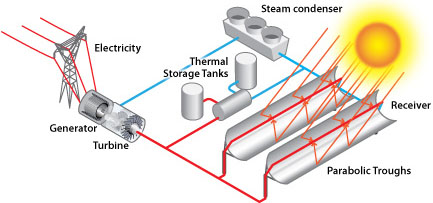UPDATE: The authors have clarified a key example with a figure and answered some of the questions, so I’m reposting this:
As the U.S. makes significant progress towards enacting a cap-and-trade system to control greenhouse gas emissions, some are worried that the new Waxman-Markey bill (W-M or H.R. 2454) may enable polluting utilities to reap windfall profits. We disagree. The allowance allocation provisions of this bill have been thoughtfully crafted to avoid a repeat of Europe’s experience. There certainly are issues and challenges remaining with the legislation, but windfall profits arising from allowance allocations isn’t one of them.
So begins an exclusive analysis of Waxman-Markey for Climate Progress by two of the country’s leading experts on the electric utility industry and energy economics, Peter S. Fox-Penner and Marc Chupka. The debate over the large amount of allowances given to utilities is certainly heated (see “Greenpeace’s indefensible attack on the House clean energy bill perpetuates myths about the European carbon trading system“). But very few are expert on the economics of regulated electric utilities — including me. That’s why I asked for this analysis from two former colleagues from the Clinton Energy Department. Fox-Penner is an internationally recognized authority on electric power industry issues, whose forthcoming book is The Future of Power (Island Press). He held the position of Principal Deputy Assistant Secretary for Energy Efficiency and Renewable Energy right before I did. Chupka is an economist with two decades of public and private sector experience analyzing the market impacts of both domestic and international energy and environmental policy. He was Acting Assistant Secretary for Policy when I was at DOE. This analysis examines the likely impact of the allowance allocation to utilities and includes an extended Q&A at the end.
The key to W-M’s success in this area is that it is careful to give the overwhelming majority of free utility allowances to the electric or gas retail distribution company, not the generator or the entity that sells wholesale gas or power itself. Whether or not you have electric or gas deregulation in your state, you still receive your power or gas deliveries from a regulated distribution company. If you are served by a rural electric co-op they are your distributor, and similarly for a government-owned utility like LADWP. All distributors are either state-regulated, customer-owned, or government-owned.
While you may not know it, every monthly power or gas bill that customers pay separates the cost of delivering gas or power from making or buying the energy itself. State regulators, city managers, or coop management boards — who have full access to the accounts of distributors – set distribution charges so as to manage the profits earned by the distributor. This is a key point. Unlike some other parts of the utility industry, distributor profits are strictly controlled.
W-M specifies that the bulk of free allowances given to utilities can be given only to a gas or electric distributor — not to a standalone retailer or generator. Furthermore, the law says that “the allowances distributed to an electric or gas local distribution company … shall be used exclusively for the benefit of retail ratepayers of such…company.” Each state regulator or manager of a coop or municipal utility must conduct a proceeding to determine how the value of allowances will be treated – for example some of the proceeds might help fund energy efficiency if the regulators decide that represented benefits to retail customers. But, W-M does not allow the size of individual customer rebates to reflect that customer’s metered energy consumption.
With these provisions, it will be awfully hard for any utility to harvest a windfall from the free allocations — especially a shareholder-owned utility. Yes, the free allowances given to the distribution utility will be worth a lot. But the law is pretty clear that the benefits of receiving the free allowance go to the utility’s customers, not their shareholders.
As folks who’ve been involved in utility regulation for a long, long time, we see this as pretty straightforward and transparent. State regulators will all know the number of allowances each utility gets and their value. [See the Q and A below for more on this] They will see the accounts books of utilities (as they do today). To give ratepayers the value of the allowances, they will probably do one of two things:
(more…)
 Hurricane season officially begins tomorrow. So I’m updating one more 2008 post on the science. Last September, Nature published a major analysis that supports my 2-parter (Why global warming means killer storms worse than Katrina and Gustav, Part 1 and Part 2). As Nature explained:
Hurricane season officially begins tomorrow. So I’m updating one more 2008 post on the science. Last September, Nature published a major analysis that supports my 2-parter (Why global warming means killer storms worse than Katrina and Gustav, Part 1 and Part 2). As Nature explained:












 RSS
RSS Subscribe by Email
Subscribe by Email Follow Climate Progress on Twitter
Follow Climate Progress on Twitter

